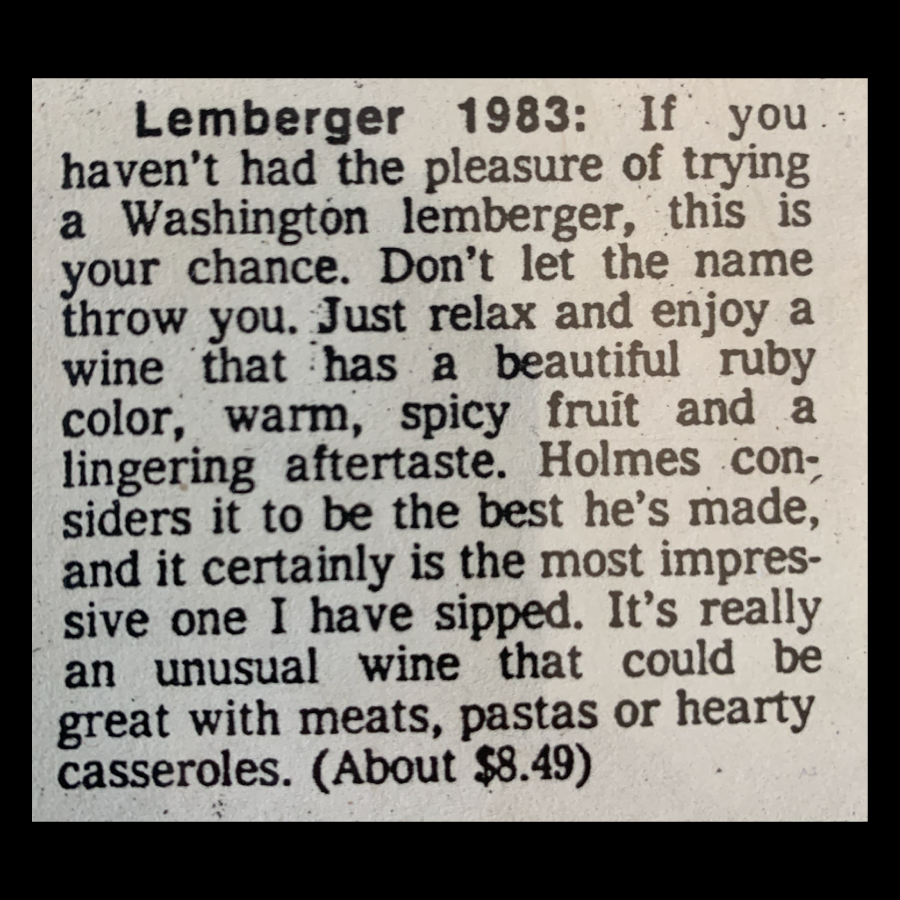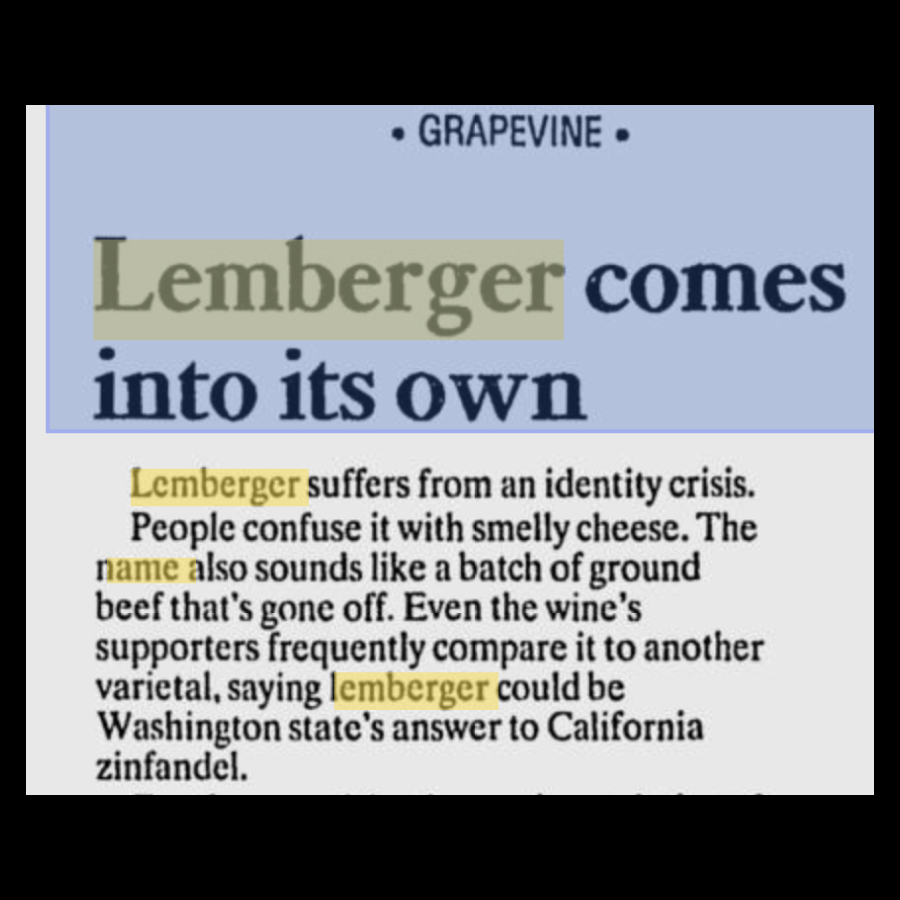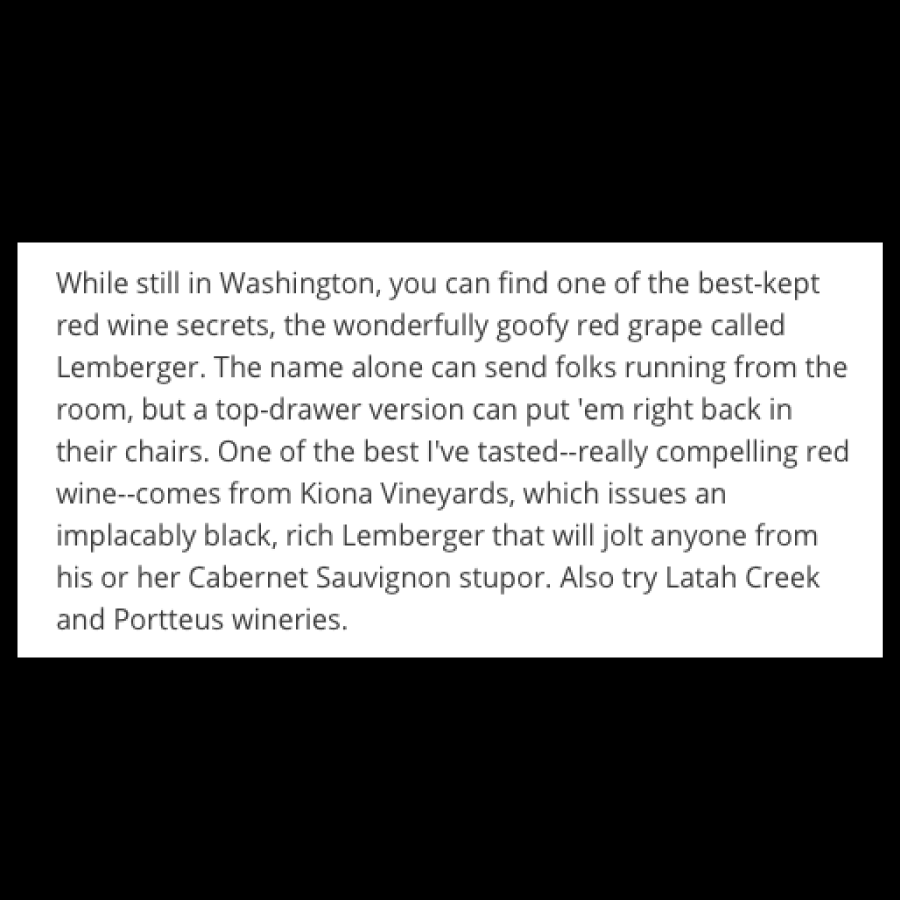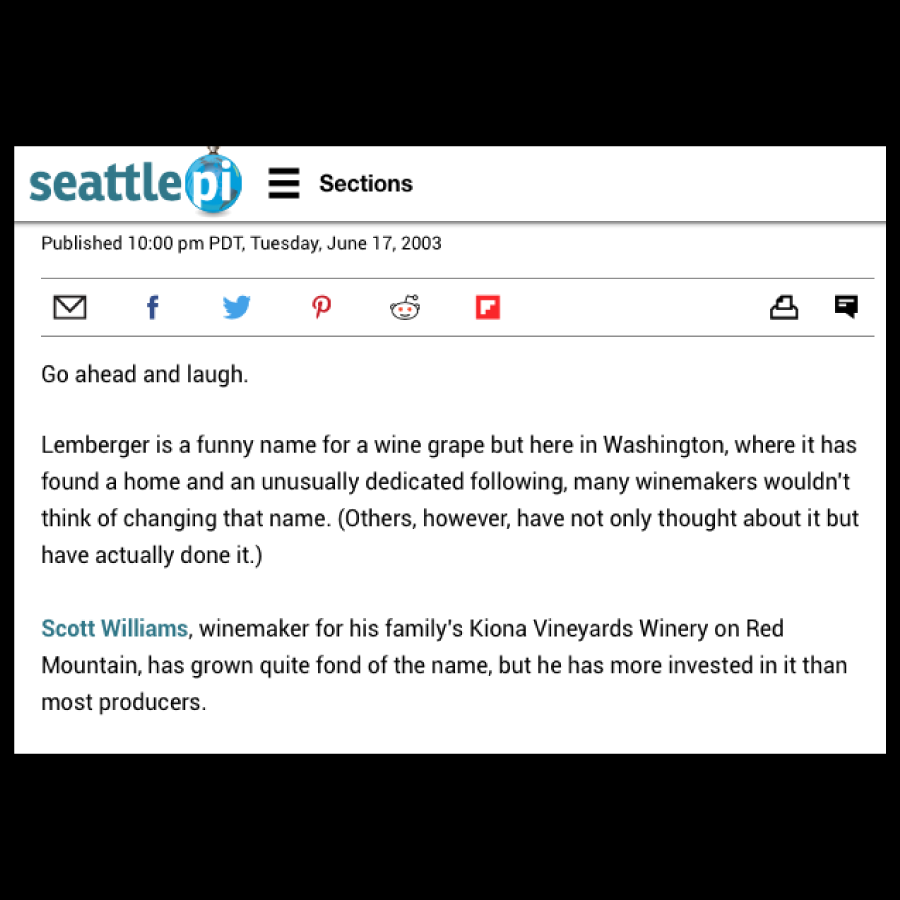The fact that this wine has an unusual—perhaps eyebrow-raising—name is a feature, not a bug. We're living in an era that commemorates the uncommon, that seeks out differentiation. Memory thrives on novelty! If a wine checks all the boxes and has a distinguishable, highly Search-Engine-Optimized name, that's a good thing.
Our small, family-owned and operated business has benefitted immensely from our four-decades long association with the grape, if for no other reason than Lemberger's rarity and charm. In many circles, Kiona is synonymous with Lemberger in the western hemisphere. Are we going to become fabulously wealthy and retire on mega-yachts because we're selling this quirky wine for <$20 a bottle? Certainly not. But it does have intrinsic, memorable appeal that extends to our operation as a whole. Lemberger is a tasty bit of liquid intrigue.
While there's nothing wrong with gravitating towards the familiar, I would argue that there's minimal downside to stepping off the beaten path once in a while when it comes to wine (but also in life, amirite). I'm sure Picpoul, Aligote, Grüner Veltliner, and Aglianico producers would agree; when it comes to wine, it can be rewarding to swan-dive into the unknown. How cool is it to be the person that brings a bottle of Lemberger to a house party (remember those)!
The idea of "authenticity" in wine is probably overdone in the current wine-marketing environment, but gosh darn it if it doesn't apply here. Sure, this wine is not focus-group-tested with a snazzy demographically-targeted proprietary name. It's just a transparently-grown, produced, and marketed wine made from a grape that is unfamiliar to most people.
We'd lose some of that authenticity if we were to change the name now (alternatives include Kékfrankos, Nagyburgundy, Blaufränkisch, and Frankovka, among others), or even more insidiously, slap it with a proprietary name. We owe it to the folks that have been buying it religiously for the last 40 years to stay the course. And, as I've hopefully established, the name isn't an issue. It's a question of perspective.
I do believe we're seeing a shift towards wider acceptance. Whether it's access to unlimited, instantaneously available information in the the form of smartphones, younger people being more willing to try something new, or just the idea that wine can be experimental from the drinker's perspective, the result is that our Lemberger has never been more popular than it is today. Other wineries are starting to use the grape to produce their own idiosyncratic bottlings, which, to be honest, warms our collective hearts.
We hear the question, "are you ever going to rip those vines out?" with some regularity. The insinuation is that Lemberger is a burden, or otherwise less valuable to us than other cultivars might be. It's not a burden; it's a delight. And one we're going to continue to produce for the next 40 years.
A significant portion of this article's audience will have been nodding their heads in agreement; they know how good it is to have a delicious, cult-worthy wine in the rotation. To the rest of you, we're ready to welcome you into the know.
Try a bottle. Your evening will take a turn for the rad.








